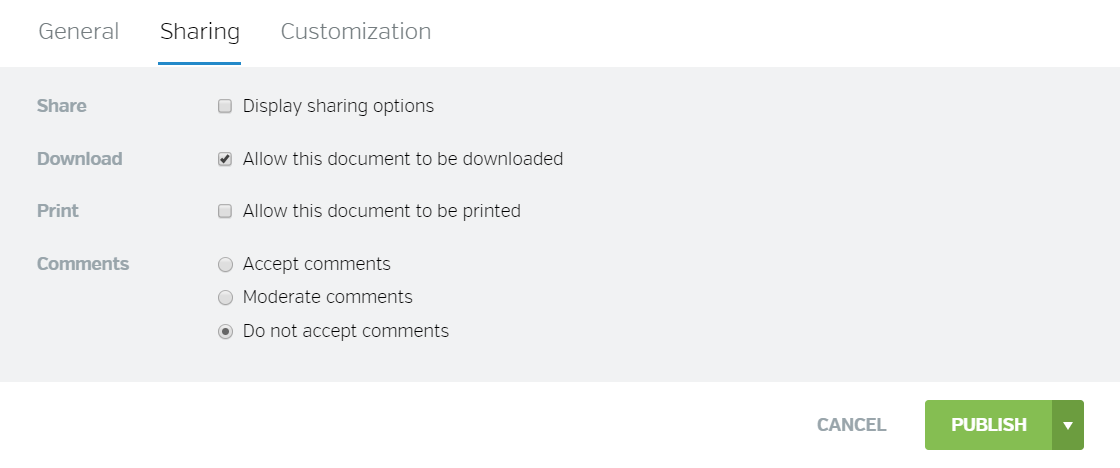Because the connected world changes fast, every fall we bring you a look at the most important trends to know for next year. But in 2020, the COVID-19 pandemic created major disruption across every industry—including online communications. So today we’re highlighting five digital publishing trends for 2021 that you can count on, no matter what else the year might bring.
Read on to learn which strategies will help you make the most out of online publishing in 2021.
No-Code Tools
In the future, 2020 might just be remembered as the year that everything was online. Due to safety restrictions, many people were required to stay home for long periods. The Internet allowed businesses to operate, schools to educate and friends to meet up virtually. However, as users scrambled to upload huge amounts of content, simplicity was a key priority. Digitization services needed to just work.
Don’t expect that need to change in 2021. Indeed, this trend will grow into the demand for “no-code” online services. In other words, users will continue to adopt tools that let them make websites, e-shops and digital communications without custom developments. Want to turn your plain PDF into a shareable, trackable HTML5 publication? It’s easy with a best-in-class, no-code digital publishing platform.
User Experience
Now that so much content has moved online, the next big challenge for many publishers is standing out. Since we’re shopping, learning and hanging out on the Internet all the time, it’s important to offer something different. That’s where user experience comes in. By paying extra attention to how users interact with your content, you can create exceptional experiences that audiences will remember.
Of course, the first step is having great content to share. Next, consider what digital formats will help you break through the days of videoconferencing and PDFs that users face in lockdown. Enriched media can create strong connections with online audiences. And remember that the details matter to great UX. Make your content easy to access, fun to consume, part of your brand and—ideally—just a little bit delightful.
Service First
Over the course of 2020, useful content rose above the rest to become the real winner online. Although no one sets out to make a not-useful contribution, the COVID-19 pandemic showed that audiences respond to content that solves problems. News publishers saw huge traffic as people searched for clear information and guides of all kinds, from bread-baking to home-schooling, were reliable hits all around the Internet.
In 2021, the digital publishing trend of service content will develop even further. Smart publishers will concentrate on their audiences’ most urgent questions and create made-to-order answers. To stay ahead of the curve, keep in touch with your users through social media and support. Once you know where best to be useful, it’s as simple as putting your expertise to work in a publication. (And optimize for search!)
Ad Uncertainty
Any business that relies on advertising knows how unpredictable it has been this year. Unfortunately, next year does not promise a return to stability. The biggest disruptions have hit traditional channels like TV commericals, billboards and print ads. But even though digital advertising is making a comeback, it’s not clear that things will be back to normal any time soon.
However, digital subscriptions are still growing steadily. That means 2021 will be a perfect time for publishers to take a serious look at their subscriber situation. If you already have a strategy in place, plan to evaluate its strengths and weaknesses. If you don’t have a strategy, start thinking about ways to build a subscriber base. Having loyal readers can help make up for an uncertain advertising outlook.
From the Heart
Last but not least, authenticity will be a key digital publishing trend in 2021. Since the pandemic and its effects seem likely to stretch into the new year, it’s important to stay flexible and acknowledge the challenges ahead. In practical terms, that means making clear and honest communication with your audience top priority. Focus on giving accurate and up-to-date information first.
In addition to being direct, authenticity can also call for finding a more personal voice. But don’t confuse bold branding with the power of a personal message. Although it may not be the right time for ironic memes, something as simple as a letter from the CEO will add warmth and sincerity to your business’s communications. Or invite employees to share a few words for another authentic perspective.
As always, one thing that all these digital publishing strategy trends for 2021 have in common is strong content. If you’re starting to prepare, give your publications a boost with Calaméo. Publish in a snap, customize and embed your content anywhere. Create your free account and get started today.







